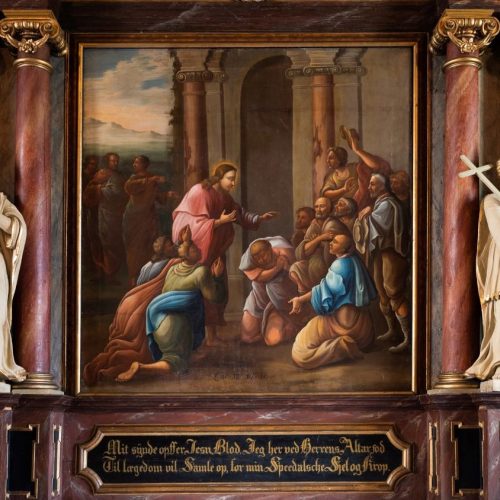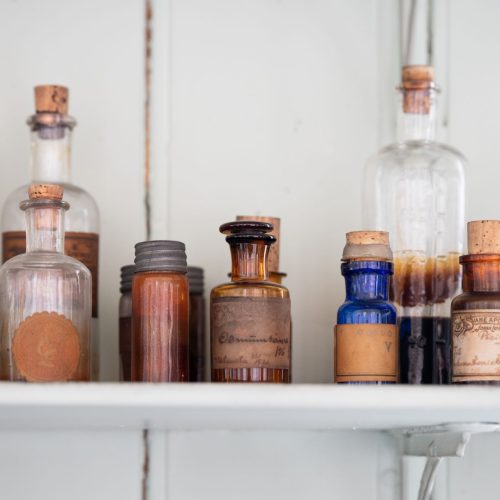Bottles of dyes
Hansen initially began examining unstained tissue samples under the microscope. However, after the German physician Albert Neisser succeeded in staining the bacterium purple with the dye crystal violet, and the surrounding tissue red with fuchsine, the bacteria became clearly visible.
Photograph of G. A. Hansen’s bust
The bust was officially unveiled in 1901 on the occasion of Hansen’s 60th birthday, and was based on the work of an international committee. At that time, it was the first public memorial erected in Norway for scientific merit, and Hansen was also the first person in Bergen to have his likeness displayed in a public space while still alive.


























